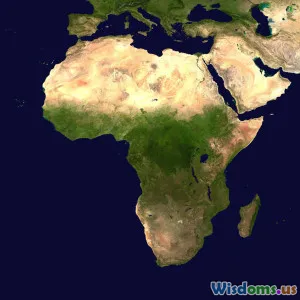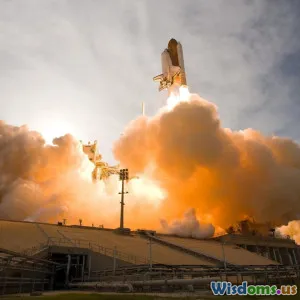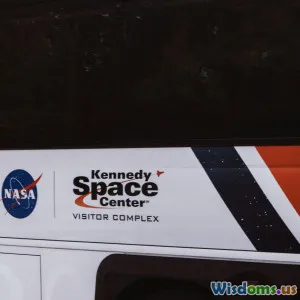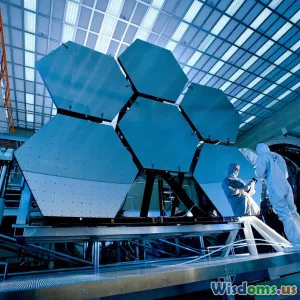
Asteroid Missions vs Lunar Bases: Which Strategy Is Best for Humanity?
10 min read Exploring humanity's future in space: asteroid missions or lunar bases—discover which strategy holds the key to sustainable space exploration. (0 Reviews)
Asteroid Missions vs Lunar Bases: Which Strategy Is Best for Humanity?
Introduction
Since the dawn of space exploration, humanity has dreamt not only of visiting celestial bodies but also of establishing a permanent foothold beyond Earth. Two competing strategies dominate the discussion today: sending missions to asteroids rich in resources or building sustainable bases on the Moon. Both approaches promise to propel our civilization into a new era of scientific discovery, economic opportunity, and expanded human presence in space. But which is truly the more effective and sustainable strategy for humanity’s future?
This article delves deep into the merits and challenges of asteroid missions versus lunar bases—and what they mean for mankind’s next giant leap.
Understanding the Stakes: Why Space Expansion Matters
Experts agree that expanding humanity’s reach into the solar system is indispensable for long-term survival, economic growth, and inspiring innovation. Stephen Hawking warned about the risks of remaining a single-planet species, while NASA and private entities like SpaceX plan ambitious missions beyond Earth orbit.
Establishing off-world operations could provide new resources, scientific knowledge, and even serve as springboards for Mars and further exploration. Within this context, deciding whether to prioritize asteroid missions or lunar bases isn’t merely academic—it shapes the trajectory of human civilization.
Asteroid Missions: Prospecting the Solar System’s Treasure Trove
Riches Beyond Earth?
Asteroids, especially Near-Earth Objects (NEOs), are packed with metals like platinum, nickel, and iron, alongside water ice—an essential resource for propellant and life support. According to a 2017 report by the Planetary Resources company, a single 500-meter asteroid could contain trillions of dollars’ worth of minerals. The potential economic impact is staggering.
Scientific Value
Asteroids are time capsules from the early solar system, providing clues about planetary formation and organic compound delivery to Earth. NASA’s OSIRIS-REx mission to Bennu and JAXA’s Hayabusa2 to Ryugu have brought back extraordinary samples, revolutionizing our understanding of these small worlds.
Technological Hurdles
Asteroid missions present complex challenges: microgravity complicates anchoring and mining; their irregular orbits require advanced propulsion; and the remote operation demands real-time communication infrastructure adjustments.
Case Study: NASA's OSIRIS-REx
Launched in 2016, OSIRIS-REx arrived at Bennu in 2018, collected samples in 2020, and is now returning them to Earth. This mission showcased capabilities in navigation, sample collection in microgravity, and long-duration spaceflight. It marked a milestone in practical asteroid exploration and resource identification.
Potential for Space Industrialization
Harvested materials could be converted into rocket fuel or construction supplies for space habitats, reducing the cost and dependency on Earth resupplies. This could facilitate the development of a solar system economy.
Lunar Bases: Humanity’s First Outposts Beyond Earth
Why the Moon?
The Moon is Earth's closest celestial neighbor—only 384,400 km away—offering the lowest-cost environment for testing long-duration human settlement technologies. Its surface contains water ice at the poles discovered by NASA's Lunar Reconnaissance Orbiter, potentially providing life support and propellant resources.
Scientific and Strategic Significance
A moon base could serve multiple functions: a platform for deep space telescope observatories (due to minimal atmosphere), geological and astrophysical studies, and a staging ground for Mars missions.
Government and Commercial Initiatives
NASA’s Artemis program aims to establish a sustainable human presence by the end of the decade, with plans to build the Lunar Gateway—a space station orbiting the Moon—as a logistics hub. International partners and commercial players, including SpaceX’s Starship development, are pivotal in this new lunar race.
Habitat and Sustainability Challenges
Survivability encompasses radiation exposure, micrometeorite protection, life support system reliability, and energy generation in an environment with a 14-day night. Innovations like regolith-based 3D printing could address construction challenges, while nuclear and solar power advancements are critical.
Case Example: China’s Chang’e Program
China’s Chang’e-5 mission successfully returned lunar samples in 2020—the first since the 1970s— and the country has plans for a modular lunar research station, underscoring international commitment toward lunar colonization.
Comparative Analysis: Which Strategy Serves Humanity Better?
| Criteria | Asteroid Missions | Lunar Bases |
|---|---|---|
| Distance from Earth | Often requires travel of millions of km or complex orbits | ~384,400 km, easier communication and emergency return |
| Resource Potential | Rich in metals and water, ideal for in-space resource use | Water ice at poles; regolith usable for construction |
| Scientific Value | Pristine samples; clues about solar system origins | Geology, astrophysics, human space adaptation |
| Human Habitation | Difficult due to microgravity and small size | More stable surface for habitats and long stays |
| Technology Status | Early stages of mining technology; sample return successful | Extensive government-led development; Artemis advancing human missions |
| Economic Potential | High due to precious materials, but uncertain markets | Potential stepping stone for Mars; resource hub |
Synergies Over Rivalry
Interestingly, these strategies are not mutually exclusive. Proponents advocate a hybrid approach: lunar bases to build experience and infrastructure, combined with asteroid missions for resource extraction. Using lunar materials to construct telescopes and fuel rockets could make asteroid mining more feasible.
Conclusion: Charting Humanity’s Course Beyond Earth
The quest to expand humanity’s presence in space is fraught with technical difficulties and immense promise. Asteroid missions shine as resource-rich, scientifically invaluable ventures that may undergird a future space economy, albeit currently constrained by formidable engineering challenges. On the other hand, lunar bases offer a near-term platform to establish sustainable human operations, test critical technologies, and serve as a strategic hub closer to Earth.
For humanity, the ideal strategy leans not on exclusivity but integration. By investing in lunar bases, we develop the know-how, infrastructure, and resilience for living beyond Earth; simultaneously pursuing asteroid missions expands our material wealth and scientific horizons.
As astronaut Chris Hadfield succinctly put it, “Exploration isn't a choice; it's in our DNA.” Whether our DNA pulls us first to the dusty plains of the Moon or the metallic riches of asteroids, both pathways beckon as stepping stones to a bold future where humanity thrives well beyond the cradle of Earth.
References
- Lauretta, D. S., et al. (2019). OSIRIS-REx: Sample return from asteroid (101955) Bennu. Meteoritics & Planetary Science, 54(4), 389-420.
- NASA Artemis Program Overview. (2023). Retrieved from https://www.nasa.gov/specials/artemis/
- Planetary Resources Report, (2017). Asteroid mining: The next gold rush?
- NASA Lunar Reconnaissance Orbiter Data, 2020.
- Chris Hadfield (2013). An Astronaut’s Guide to Life on Earth.
- China National Space Administration announcements on Chang’e missions.
Rate the Post
User Reviews
Popular Posts


















